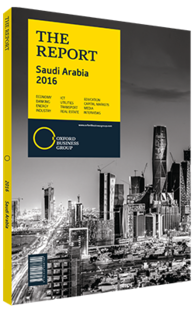Mazen Batterjee, Vice-Chairman, Jeddah Chamber of Commerce and Industry: Interview

Interview: Mazen Batterjee
To what extent do you expect the National Transformation Programme to spur private sector investment in Jeddah and non-oil growth?
MAZEN BATTERJEE: The non-oil private sector has potential to drive much of the growth in the Saudi economy. In the last decade, the non-oil private sector outperformed the economy as a whole, growing 10% annually, much faster than the overall 6% GDP growth rate. Therefore, I believe that for the coming period between 2016 and 2030, seven sectors will have the biggest potential and could contribute up to 60% of the overall growth needed domestically to double the GDP by 2030. These sectors are manufacturing, health care, tourism and hospitality, retail and wholesale trade, mining and metals, finance, and construction. They will be supported by raising output levels and providing gainful employment for the large cohort of young Saudi people entering the job market. As for Jeddah, I believe that we should target sectors like manufacturing, tourism and hospitality, retail and wholesale trade, health care, and finance.
As religious tourism in the western region is targeted as a strategic growth sector, how can Jeddah play a role in its development?
BATTERJEE: Tourism in Saudi Arabia is largely based around religious pilgrimage. Makkah receives over 3m pilgrims a year during the Hajj days and 6m pilgrims for Umrah during the rest of the year. According to the World Bank, approximately 14.3m people visited Saudi Arabia in 2012, making it the world’s 19th-most-visited country. Jeddah is also benefiting from pilgrims. They arrive and depart through Jeddah International Airport, therefore 80% of them like to spend some days in Jeddah before leaving the country. Hotels in Jeddah continue to perform well, with a market-wide occupancy rate of 78.2% in 2015. This has allowed hoteliers to yield a marginally higher average daily rate (ADR), which increased 3.5% to $275. Revenue per available room increased in line with the ADR, growing 2.5% to $215. Hajj visitor numbers are also expected to continue growing and are forecast to reach 5.2m by 2025, up from 3m in 2015.
Jeddah is also on the cusp of witnessing a significant growth of quality international, mid-market hotels and serviced apartments. Its current pipeline of 7396 rooms would represent growth of 116%. The city already appears to be benefitting from the additional interest generated by the UNESCO listing. Meanwhile, efforts such as the Historic Jeddah Festival, Jeddah Ghair Festival and Summer Jeddah Shopping Festival are also having an immediate impact, with the Jeddah Chamber of Commerce and Industry noting a 74% increase in visitors during the festivities.
In what ways are “industrial cities” in Jeddah being used to their potential?
BATTERJEE: Due to the growing demand in industrial lands in Jeddah, the Saudi Industrial Property Authority has managed to raise the number of industrial cities in Jeddah to four. The number of factories and support service projects in the second industrial city hit 400 projects with investments exceeding $6.8bn in 2015. This city has attracted significant numbers of industrial investors thanks to its strategic position and proximity to Jeddah Islamic Port. The city embraces 353 productive industrial projects, covering a variety of activities, notably chemical, plastic, and food and metal industries.
The third industrial city is 20 sq km and will be the largest industrial city in the Kingdom, attracting many foreign and local investments. Meanwhile, the fourth industrial city is located only about 25 km from Jeddah International Airport. The city is designed to facilitate the introduction of more women into the workforce and will be totally operated and managed by female staff. The project provides incentives to investors, such as long-term leasing rates for industrial land.
You have reached the limit of premium articles you can view for free.
Choose from the options below to purchase print or digital editions of our Reports. You can also purchase a website subscription giving you unlimited access to all of our Reports online for 12 months.
If you have already purchased this Report or have a website subscription, please login to continue.

